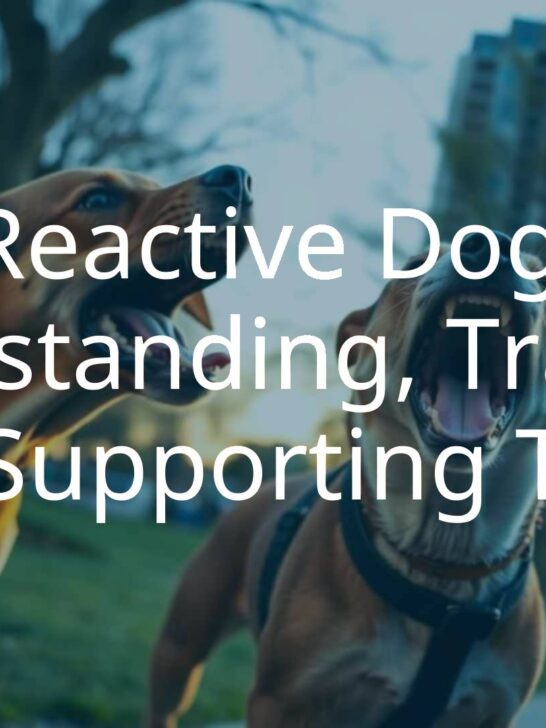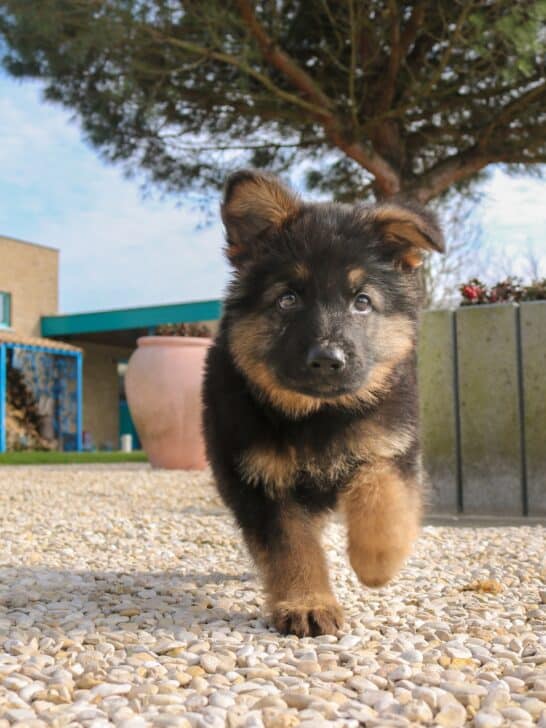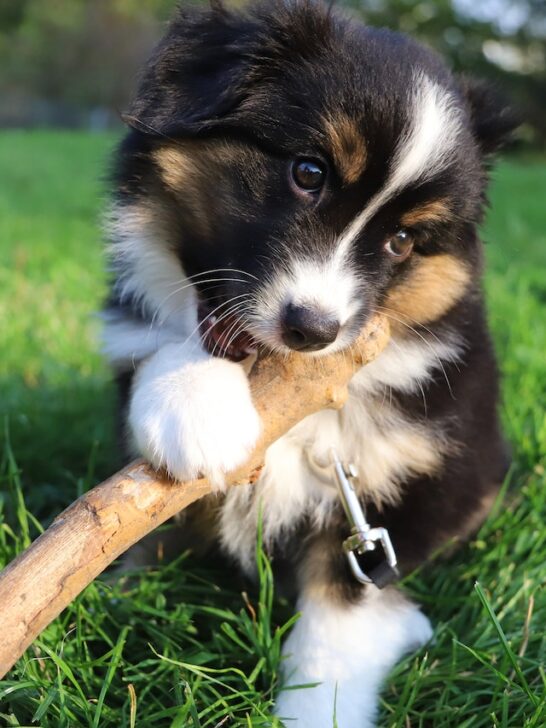My German Shepherd Is Too Friendly With Strangers: How to Properly Socialize a GSD Guard Dog
When you think of the German Shepherd dog breed, you probably think of an aloof, fierce guard dog standing with erect ears and a stalwart stance.
But just like not all people are introverted or shy, so too not all German Shepherds are aloof or standoffish.
In fact, while the German Shepherd dog breed was originally developed to guard and herd livestock and, later, to protect and rescue people, today this is the second most popular pet dog choice in the country!
That speaks volumes about just how friendly and loving GSDs can be.
However, if one of your main reasons for choosing a German Shepherd is for guard duty and protection, you may be understandably disappointed to witness your GSD behaving like a never-met-a-stranger Labrador Retriever dog.
What can you do when your German Shepherd is simply too friendly with strangers? This article will take a look at why this happens, how common it is, and what you can do about it.

Can a German Shepherd Dog Be “Too Friendly?” Watch This Video to Find Out
If you are reading this article, it comes as no surprise that German Shepherds as a breed are a popular choice for guarding and protection as well as police and military work.
But can a GSD ever flunk out of guard duty training? They sure can! Trainers working with Gavel, a German Shepherd police dog trainee, had to let him go from the year and a half-long police training program.
Their reason? He was “too friendly.”
You can watch the story in this short video.
Today, Gavel has a new job that is a much better fit for his personality and skillset. He welcomes visitors to the governor’s mansion in Queensland, Australia.
All this to say, there may be times when all the expert training in the world may not be enough to turn a friendly, sociable, cuddly German Shepherd dog into an aloof, intimidating guard dog.
But this doesn’t mean you have to give up right away. It also doesn’t necessarily mean your GSD won’t still protect and guard you if a genuine threat emerges. Let’s find out more about that now.
Are Some German Shepherds More Likely to Be Too Friendly?
This is an interesting question and a subject worth touching on here.
Back in the 18th century when the German Shepherd dog breed was first being developed, there was only one genetic line from which all GSDs were descended.
But today there are no less than three different genetic lines for the modern German Shepherd. This is because the GSD has been developed for different human goals: for show and for work.
There are two show lines, the American GSD and the German GSD. There is one working line, the working European line.
The working GSD lines have retained more of the original breed’s aloofness and talent for tracking, herding, guarding, and protecting.
The American line, in particular, is most frequently bred to compete in dog shows and be a family pet.
Breeders that specialize in companion canine GSD breeding are more likely to select breeding pairs based on friendliness than aloofness.
This means that if you have not yet chosen your GSD puppy, and your number one goal is to select excellent protection and guard dog for your family, be sure to seek out a breeder that specializes in breeding working GSDs rather than a pet or show GSDs.

Training Your GSD to Guard Doesn’t Start with Guard Dog Training
The most important fact to remember when selecting a dog breed to protect and guard your family is this: guard dog training doesn’t come first.
The first step is obedience training. This is because your dog must build a bond with you that is grounded in trust and consistent behavior on both sides before any other level of training is even possible.
Many GSD owners automatically assume that obedience training and guard dog training are done at the same time.
While there are elements of the former involved in the latter, as The Puppy Institute explains, the latter is not possible without the former already being there.
Once your GSD has learned the basic commands and is comfortable and confident (i.e. no separation anxiety, no acting out) in your company and as a member of your family, then and only then is it time to introduce protection training.
So don’t start with guard dog training and then get discouraged when you get uneven and unsatisfactory results. Start with the basics and proceed only when those have been fully mastered.
The German Shepherd in Protection Mode: Prey Drive Versus Defense Drive
There are several different categories of dog training beyond the level of basic obedience training.
For instance, perhaps you have heard of Schutzhund, which is a popular type of canine training program for certain dog breeds with a strong natural prey drive.
Schutzhund is most often taught as a competitive sport for dogs rather than as a form of protection.
German Shepherds tend to excel in Schutzhund competitions because they are so athletic and intelligent and they have a strong natural prey drive.
But Schutzhund training will not prepare your GSD to guard and protect you. In fact, training experts say this is the wrong method to pursue if you want your dog to become a guard and protection dog.
Rather, what your GSD really needs is a training course that focuses on personal protection – protecting you and your family from danger.
This type of training taps into the German Shepherd’s defense drive rather than the prey drive.

What Is the German Shepherd Defense Drive and How Do You Train For It?
German Shepherd dogs naturally possess a defense drive.
In fact, every living being has some level of defense drive, which is the natural instinct to self-protect in the face of danger.
But in dogs, that defense drive typically extends beyond the dog and to you, their owner, and other members of your family.
Here, one of the main reasons why you may assume your GSD is “too friendly” is simply because you have never been in the presence of a true threat!
Another reason why you may not have seen your dog’s defense drive in action is that when the defense drive is left untrained, it may manifest in two ways: submission or aggression.
Properly trained, however, the GSD’s defense drive will manifest in a particular way based on what the dog trainer has taught your dog to do in the presence of a legitimate, verifiable threat.
Training your dog to maximize their natural defense drive is not for amateurs.
You really should not try to do it yourself at home because it can be dangerous! It is important to work with a professional dog trainer to get the results you are seeking.
To this point, as this article explains, people are often willing to pay seriously top dollar for a properly trained GSD guard and protection dog.
Finding a professional K9 dog trainer that specializes in developing the defense drive of the German Shepherd dog and can work with you and your dog is the best way to help your dog learn to distinguish between friend, neutral stranger and genuine threat.

Will Some GSDs Always Be Too Friendly to Provide Protection?
In the video you watched earlier here, you heard Gavel’s story. Gavel went through several months of police dog training before trainers realized he just wouldn’t ever be police dog material.
But does this mean Gavel would not protect himself or his owners in the face of a legitimate threat?
No it doesn’t.
One of the most important tools you have at your disposal to increase the defense drive response in your GSD is, once again, training for behaviors linked to specific commands.
Perhaps your GSD is so friendly they have a default towards assuming everyone is friendly. You can still train your dog to guard and protect you by training commands that are associated with certain behaviors.
Here, you will need to literally tell your German Shepherd (by the command you issue) that there is a threat.
For German Shepherds with a low defense drive (more common in diluted mixed breed GSDs and “pet” genetic lines), they may need this extra command to tap into their defense drive and get to work defending you.
In summary, there are a variety of reasons why you may be concerned your German Shepherd puppy, adult dog or rescue dog might not defend you and your family.
But in most cases, it is a lack of training combined with the absence of a true threat that is creating this concern.
Working with a qualified professional protection dog trainer can help you maximize your German Shepherd’s natural love for you as a protection tool.



















